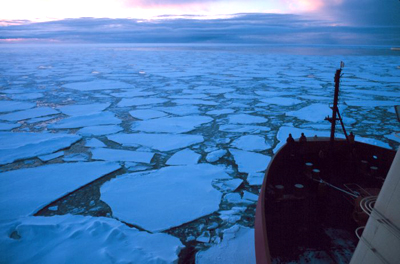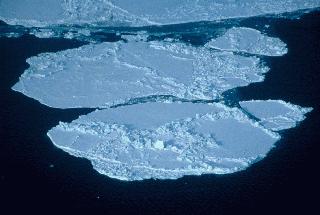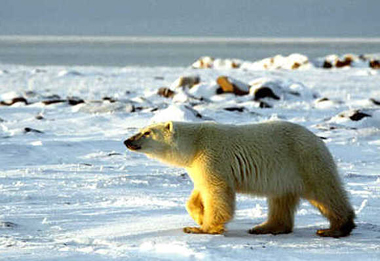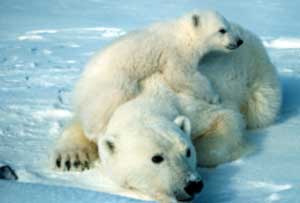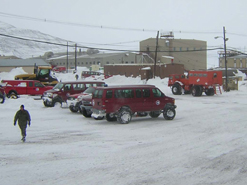Click on image for full size
NOAA Corp Collection, Photographer Michael Van Woert
Related links:
Movie showing Yearly Changes of Sea Ice Extent in the Arctic
Movie showing Yearly Changes of Sea Ice Extent in the Antarctic
Compare Images of Arctic Sea Ice Extent Side-by-side
Compare Images of Antarctic Sea Ice Extent Side-by-side
Activity: Graphing Sea Ice Extent in the Arctic and Antarctic
Polar Oceans
The oceans that are in the polar regions are a bit different from other oceans on Earth. There is often sea ice at the surface, especially during the winter months. And those chilly waters are home to some unique marine life.
There are two oceans in Earth's polar regions.
- The Arctic Ocean is in the north polar region.
- The Southern Ocean is in the south polar region.
Seawater from polar regions can be denser than seawater from other places. It is denser because it is cold. It can also become saltier than other seawater and that makes it denser too. The denser seawater sinks to the bottom of the ocean. It travels out of the polar regions in slow currents that travel around the bottom of the world’s oceans.
The polar oceans are warming up as Earth’s climate changes. Scientists are studying how the polar oceans, the sea ice at their surface, and the marine life within them, are changing because the Earth is getting warmer. They have found that sea ice in the Arctic Ocean is melting. Polar bears and other species rely on the sea ice, so they might be in trouble as sea ice melts. In the Antarctic, scientists are trying to figure out if penguins will be affected as sea ice melts there.


